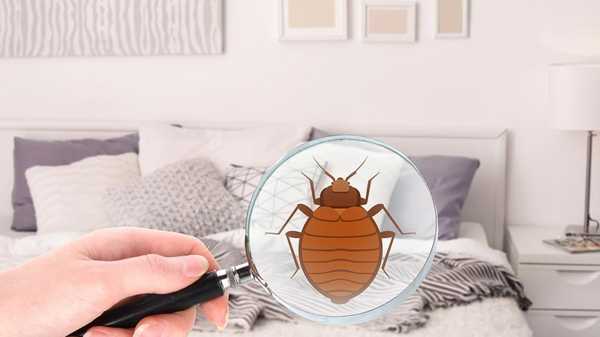What Are The Main Causes Of Migraines?
Migraines are a debilitating health issue affecting approximately 12% of the global population, impacting children, adolescents, and adults alike. Characterized by intense, throbbing headaches, these episodes are frequently accompanied by nausea, light sensitivity, and debilitating fatigue. Such symptoms can significantly impair daily activities and overall quality of life. As a common neurological disorder, understanding the intricate causes behind migraines is essential for individuals suffering from this condition, as well as for healthcare professionals who aim to provide effective care.
Migraines are a debilitating health issue affecting approximately 12% of the global population, impacting children, adolescents, and adults alike. Characterized by intense, throbbing headaches, these episodes are frequently accompanied by nausea, light sensitivity, and debilitating fatigue. Such symptoms can significantly impair daily activities and overall quality of life. As a common neurological disorder, understanding the intricate causes behind migraines is essential for individuals suffering from this condition and for healthcare professionals who aim to provide adequate care.

Recognizing triggers—from hormonal changes and Stress to environmental factors—can yield vital insights into managing symptoms. By equipping themselves with this knowledge, individuals can adopt effective strategies to reduce the frequency and intensity of migraines, thereby enhancing their everyday functioning. This article delves into the primary causes of migraines, providing a comprehensive guide for understanding this prevalent condition and empowering those affected to pursue better management options and improve their quality of life.
Section 1: Understanding Migraines
1.1 Definition
Migraines are a complex and often debilitating class of headaches, notable for their intense throbbing pain, usually localized on one side of the head. Unlike routine tension headaches, migraines frequently present alongside a range of neurological symptoms. They can be classified into several distinct types, including migraine without aura, migraine with aura, and chronic migraines, along with various subtypes. A common misconception is that migraines are merely severe headaches; they entail specific neurological implications capable of significantly impairing daily functioning.
1.2 Symptoms
Migraine attacks exhibit a spectrum of symptoms beyond just head pain. Individuals frequently experience nausea, vomiting, and heightened sensitivity to light and sound. The severity of these symptoms can vary widely; while some may encounter mild discomfort, others suffer excruciating pain lasting from several hours to days. The duration and intensity of migraine attacks can differ significantly, complicating management for many sufferers. Recognizing these symptoms not only aids in accurate diagnosis but also helps in tailoring effective treatment strategies that alleviate the impact of migraines on daily life.
Section 2: Biological Causes Of Migraines
2.1 Genetic Factors
Migraines frequently run in families, underlining the substantial role of genetics in influencing susceptibility. Studies reveal that individuals with a family history of migraines are more likely to experience headaches themselves, with about 50% of those diagnosed reporting a first-degree relative with the same condition. This hereditary aspect suggests that certain genetic variations may impact how individuals process pain or their brains manage neurotransmitter levels. Understanding one's family medical history is thus crucial in assessing the likelihood of developing migraines.
2.2 Neurobiological Changes
The occurrence of migraines correlates closely with neurobiological shifts within the brain. Key neural pathways can become hyper-excitable, increasing sensitivity to various stimuli. Notably, neurotransmitters such as serotonin play pivotal roles, as their fluctuations are known triggers of migraine episodes. Low levels of serotonin, due to diverse factors, can alter pain perception, leading to debilitating headaches. Other neurotransmitters, including calcitonin gene-related peptide (CGRP) and glutamate, are also implicated in the pathophysiology of migraines, further highlighting the complex brain chemistry surrounding these painful events.
2.3 Hormonal Influence
Hormonal fluctuations significantly contribute to migraine occurrences, especially among women. Changes in estrogen during the menstrual cycle are closely linked to the frequency and severity of migraine attacks. Many women report heightened migraine activity during menstruation, pregnancy, or menopause, indicating that these hormonal transitions can pave the way for debilitating headaches. Recognizing these patterns allows individuals to better manage their migraines by aligning preventive strategies with their hormonal cycles, effectively reducing frequency and severity during vulnerable periods.
Section 3: Environmental And Lifestyle Triggers
3.1 External Triggers
A variety of environmental factors often overlooked can trigger migraines. External triggers can greatly influence migraine onset. Weather changes, including temperature fluctuations and variations in humidity, may provoke attacks, particularly among sensitive individuals. Allergens like pollen, dust, and mould can also act as catalysts for migraine episodes. Additionally, sensory stimuli such as strong odours—emanating from perfumes, cleaning agents, or food—and exposure to bright or flickering lights can readily induce migraine episodes. Identifying and managing these potential triggers is essential for effective migraine prevention.
3.2 Dietary Triggers
Diet serves as a critical factor in the occurrence of migraines. Certain foods are notoriously known to trigger migraines, with dietary triggers including aged cheeses, processed meats, and alcohol. Other culprits may include fermented foods, chocolate, and items loaded with sugar. Keeping a detailed food diary is helpful for individuals, aiding awareness of dietary patterns and recognition of specific foods that may instigate a migraine.
3.3 Stress And Lifestyle
Stress as a major contributor to the frequency and intensity of migraines cannot be overstated. Mental and emotional strains are widely recognized triggers for migraines, affecting an individual's overall well-being. Sleep quality further exacerbates this issue, as disrupted or insufficient sleep increases vulnerability to migraines. Maintaining an active lifestyle through regular physical activity can help alleviate Stress and decrease the likelihood of migraine attacks. Grasping the connection between these lifestyle factors is vital for individuals managing migraines, as cultivating a balanced routine can ultimately lead to an enhanced quality of life.

Section 4: Psychological Factors
4.1 Emotional Well-Being
Migraines extend beyond mere head pain; they significantly intertwine with emotional well-being. Research indicates a substantial link between chronic migraines and mental health disorders such as anxiety and depression. The unpredictability of migraine episodes can trigger psychological distress, as individuals often worry about the potential social or professional repercussions of an impending attack. Living with chronic pain can foster feelings of helplessness, intensifying existing mental health challenges. This bidirectional relationship is critical to acknowledge, as individuals who experience migraines may develop anxiety or depression. In contrast, those with preexisting mental health issues are at elevated risk for migraine development.
4.2 Coping Mechanisms
Putting effective Stress management strategies in place is vital for individuals suffering from migraines. Not only does Stress serve as a trigger for migraines, but it can also intensify their frequency and severity, leading to a detrimental cycle. Incorporating relaxation techniques such as mindfulness meditation or Yoga into daily routines can offer significant relief. Therapy options, particularly Cognitive Behavioral Therapy (CBT), have shown benefits; CBT assists individuals in reframing their thoughts and emotions related to pain, fostering healthier coping mechanisms. Both individual and group therapy sessions can equip migraine sufferers with crucial tools to manage Stress effectively, ultimately improving their overall quality of life.
Section 5: Prevention And Management Strategies
5.1 Lifestyle Changes
Implementing proactive lifestyle changes can yield significant reductions in the frequency of migraine attacks. Regular exercise remains imperative, as engaging in aerobic activities like walking, swimming, or cycling contributes to overall well-being and reduces Stress, a common migraine trigger. Adequate hydration is equally important; aspiring to consume at least eight glasses of water daily can prevent dehydration, a known contributor to migraines. Sleep hygiene should also be prioritized—establishing a consistent bedtime routine, ensuring sufficient hours of rest, and creating a calming sleep environment are pivotal steps. These relatively simple alterations empower individuals to take control of their migraine management.
5.2 When To Seek Medical Help
Recognizing when professional medical assistance is needed is essential for individuals suffering from migraines. Consultation with a healthcare provider becomes crucial if migraine attacks increase in frequency or intensity or remain unresponsive to typical treatments. It is also vital to seek immediate care in the presence of accompanying symptoms, such as visual disturbances, confusion, or severe nausea. Early intervention can lead to tailored management strategies uniquely suited to improving the quality of life for migraine sufferers.
Navigating The Complexities Of Migraine Management
Understanding the multifaceted causes behind migraines entails examining biological, environmental, and psychological factors. Each of these elements uniquely contributes to the individual experiences of migraine sufferers, underlining the importance of personalized care. As we navigate this intricate landscape, it becomes imperative for individuals to engage in their health management journey proactively. By seeking personalized assessments and tailored strategies from healthcare professionals, individuals can gain better control over their migraines, reducing both frequency and intensity, ultimately improving their overall quality of life.







